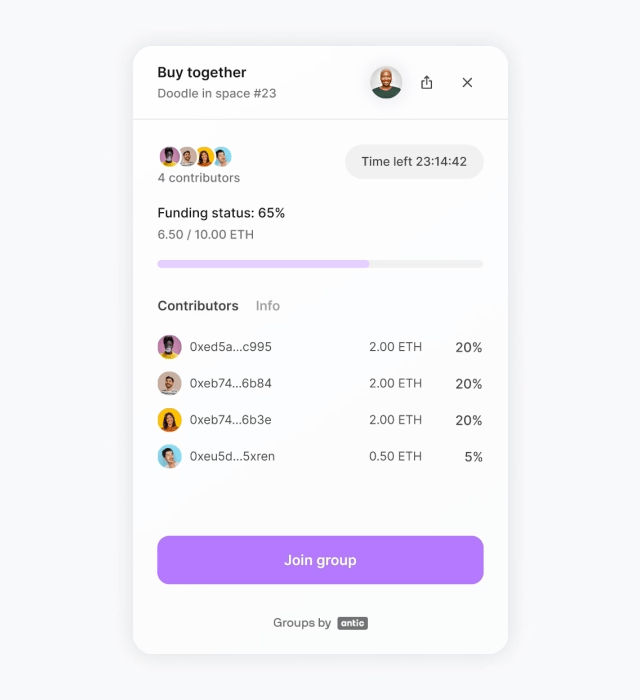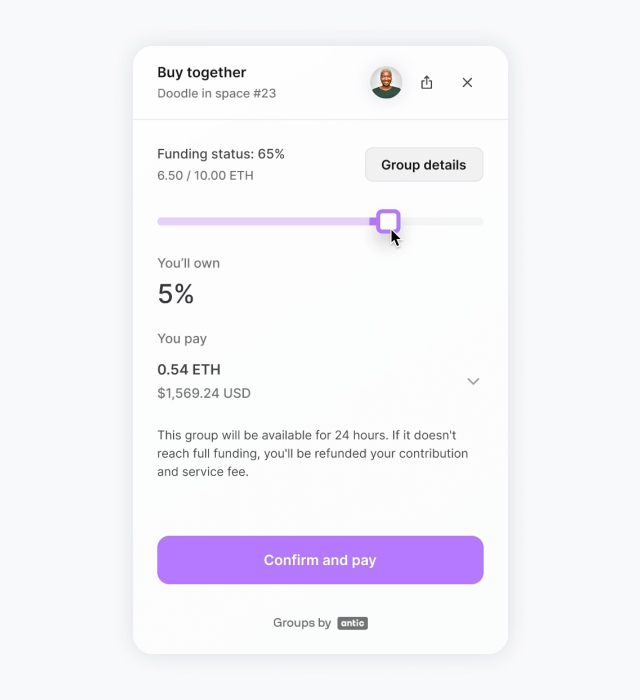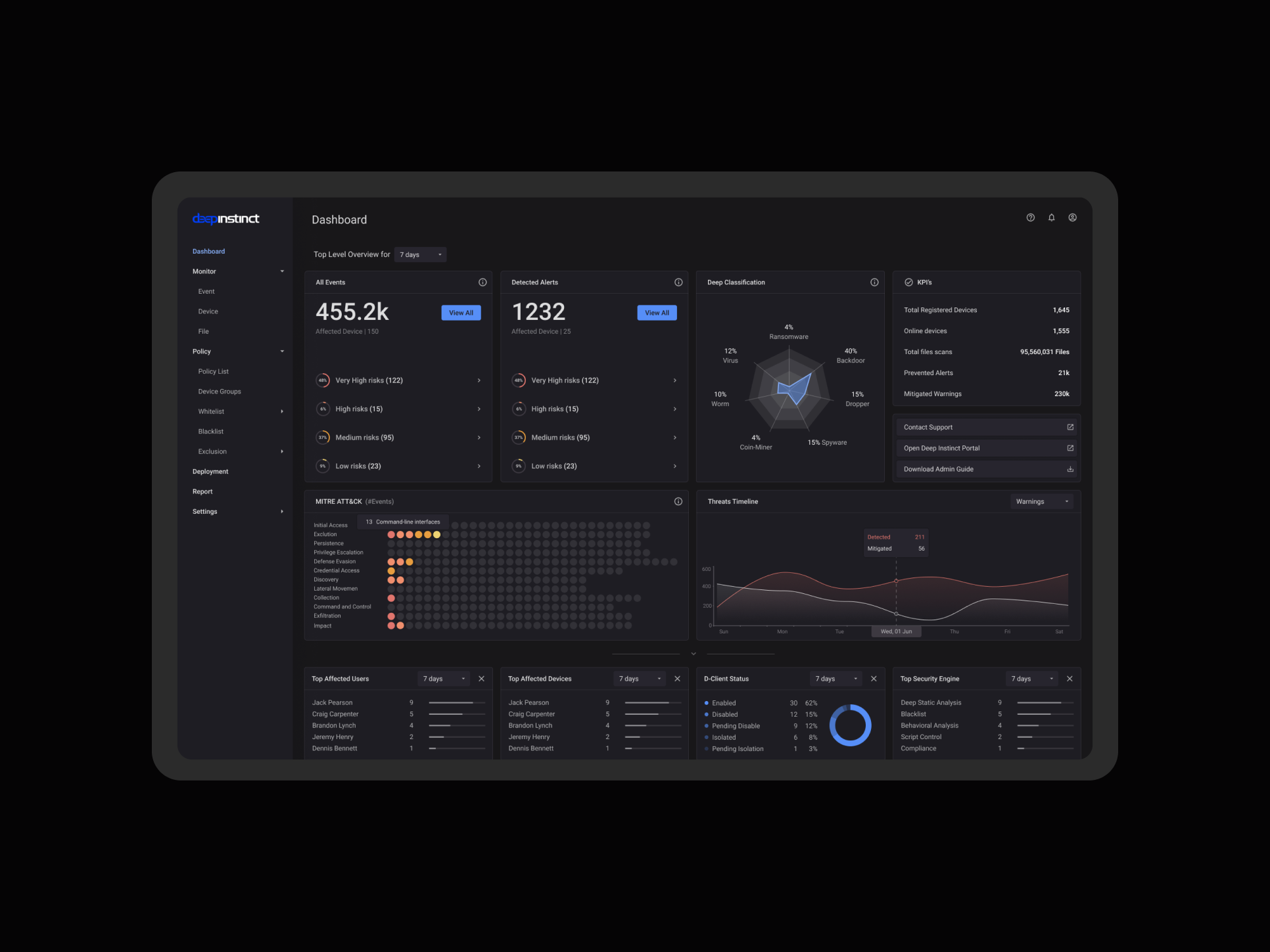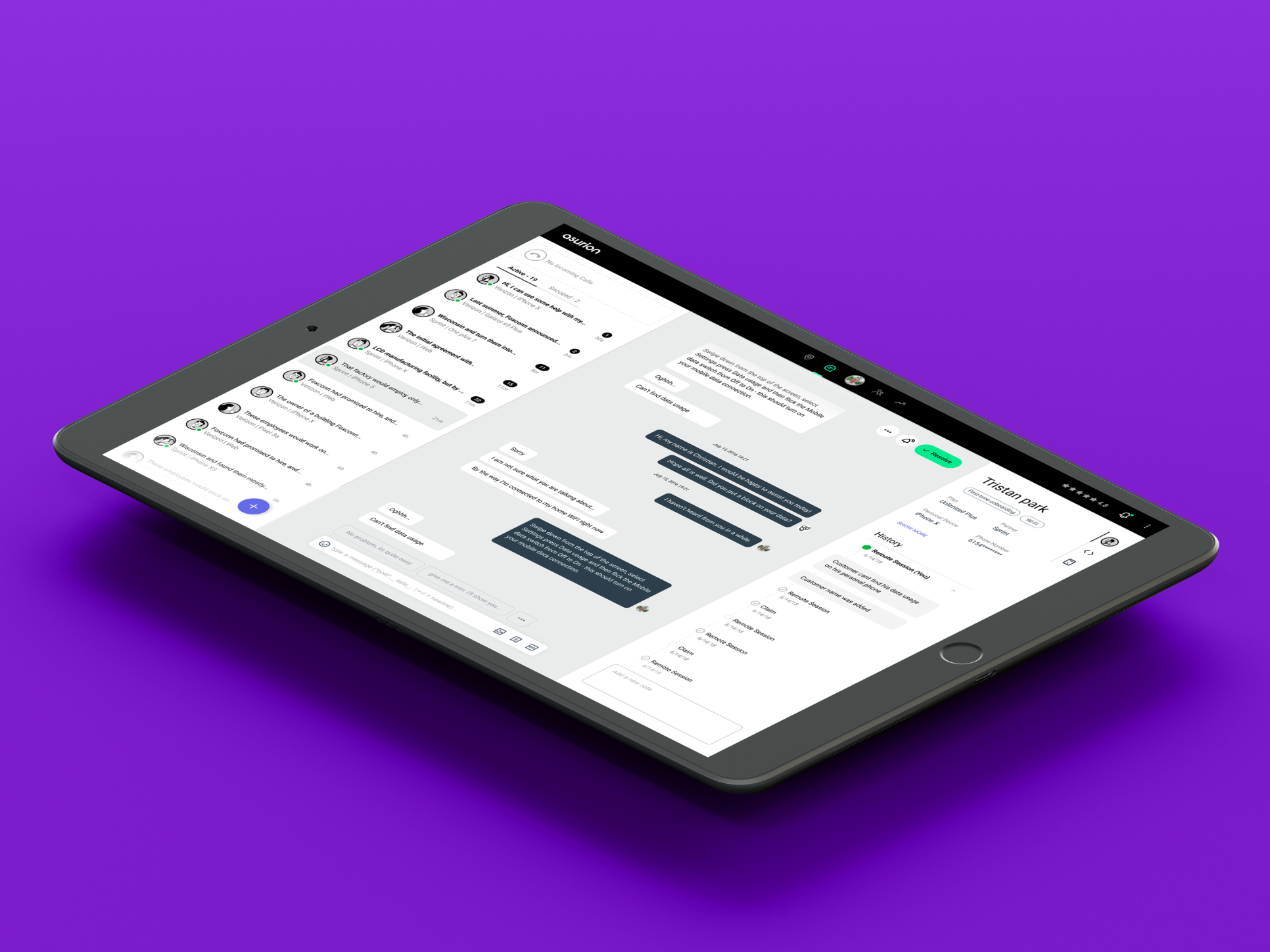Antic Groups is a B2B2C solution for NFT marketplaces that allows groups to buy assets together over the blockchain.
Democratize access to tradable assets
In 2021, limited opportunities for collective NFT purchases excluded many individuals from participating in the booming NFT market due to barriers such as concentrated capital ownership and reliance on off-chain solutions.
👉 10% of wallets possess the majority of NFT capital, creating barriers to widespread access. This is particularly evident in "blue chip" NFTs, which carry price tags ranging from $1,500 to $44,000, depending on their scarcity, popularity, and desirability.
👉 Lack of trust and reliance on off-chain activity have emerged as challenges. Users seeking to pool capital and fund NFTs together have resorted to off-chain solutions like P2P platforms.
Research
"The bot"
We aimed to investigate group formation, coordination, and decision-making in shared NFT purchases.
By developing a Telegram bot with core capabilities and distributing it to multiple NFT communities, we observed their interactions, coordination methods, decision-making processes, and fund-locking mechanisms.
Telegram bot
Discovery questions
Some of the questions that led us while exploring the bot interaction:
• How do people handle shared payments over digital assets today?
• How do people make payments if they want to buy together digital assets over the blockchain?
• How do groups are formed and make decisions (off-chain) over desired assets?
• What are the main obstacles for groups to own together digital assets today?
Insights
Targeting Crypto-Native Users
Crypto-native users are preferred over mainstream due to industry standards and complex processes for creating value. We aim to target knowledgeable users who can add fiat and make blockchain transactions.
Balancing UX and Gas Prices
High gas prices and wallet signatures pose challenges for optimizing UX. Creating groups over the blockchain required high gas fees and additional signatures, affecting the user experience. We explored different options, balancing cost and usability.
Balancing group direction and democratic participation
Achieving the right balance between driving the group towards a shared goal and maintaining democratic decision-making was key. Having a moderator improved the success of group purchases, while also providing a democratic tool for asset acquisition.
Navigating Blockchain Constraints and Limited Compatibility
In the blockchain space, we face constraints such as reliance on external services (fiat and wallet authentication), limited compatibility only to Polygon and Ethereum networks, and upfront non-refundable gas fees due to the immaturity of the web3 industry.
Feedback from the POC
The Challenge/goal
Create a solution for groups to buy & manage together digital assets.
• Make expensive assets available to everyone
• Eliminate the need to trust buyers off-chain (P2P)
• Give groups a management control layer that is blockchain-based
• Companies will be able to improve their value proposition and increase market reach
The go-to-market strategy
Based on the research and mapping of upcoming initiatives in the NFT space, we decided to solve the user's problems by Taking a B2B2C GTM strategy: unifying Payments with an Agnostic 'Buy Together' Button Across Marketplaces.
• Drive liquidity in marketplaces.
• Enhance intuitive asset buying process & align with common e-commerce payment patterns
• Leverage familiarity of NFT marketplace users.
• Leverage trust and risk mitigation through marketplace hosting.
We believe that the implementation of the Groups solution for marketplaces will increase liquidity, enhance trust and risk management, and democratize the trading of digital assets. Success will be indicated by a rise in overall NFT trading by groups.
Execution
Users flow
The users flow, enabling private groups accessible via URL, was mapped in a circular approach to allow users to navigate through various purchasing stages and identify experience issues requiring backend or blockchain modifications for improvement.
Users flow
Main screens
Groups are private and are reachable only via an URL. The following are the main jobs for a user to become a group member: join, define contribution & approve over the blockchain

Join a group

Add contribution

Blockchain confirmation & share
UX methodologies used
We implemented several UX methodologies to support the users in their decision making including:
Progressive Disclosure
Reducing the cognitive load by splitting the decision “if” to join and the decision “for how much” (“foot at the door” approach), and internal decisions like payment fee details.
Reducing the cognitive load by splitting the decision “if” to join and the decision “for how much” (“foot at the door” approach), and internal decisions like payment fee details.
Nudge
Showing users the countdown when deciding if to join the group nudges them to join quickly.
Showing users the countdown when deciding if to join the group nudges them to join quickly.
Social proof
Show who already joined the group to help with taking action to join too.
Show who already joined the group to help with taking action to join too.
Framing
Leading the action by asking for how much ownership and not by how much capital to handle technical and product complexity.
Leading the action by asking for how much ownership and not by how much capital to handle technical and product complexity.
Ethical approach (5% min by default)
The slider by default does not create Status Quo Bias and nurtures trust when presenting the lower amount available to join the group (5%).
The slider by default does not create Status Quo Bias and nurtures trust when presenting the lower amount available to join the group (5%).
The group purchased the asset successfully
Contextual widget tracking
To maintain user context while providing status updates, we implemented the ability for users to minimize the widget and track group progress even when it is not in focus.
Minimise iframe view
Iterations and improvements
Early testers gave us very good input on how they interact with the platform, what value it can give them as a group, and what can be improved:
• Users wish to have more choices when selecting the amount of ownership
• Users don't understand that when clicking "Buy together" they are starting a new group
• Users don't understand that the group that they are creating is private
• After their first interaction with the widget, if they "lose" it - users don't know how to get back to the group
• Users had a hard time finding the "leave group" button (inside the user menu)
Feedback mapping
Enhanced Contribution Flexibility
Initially, groups consisting of 2-20 people were established, and the blockchain was configured to support minimum ownership of 5% with increments of 5% to avoid situations where a group is full but lacks sufficient funds for purchase completion. However, user feedback revealed a desire for more ownership flexibility. To maintain a user-friendly experience while addressing this request, we introduced additional manual tools to allow users to refine their contribution amounts.
Before and after
Outcome
During the implementation process, the NFT and crypto markets experienced significant economic fluctuations. Although we collaborated with two design partners to implement the group's product, our go-to-market strategy relied heavily on the user volume within marketplaces. However, due to insufficient user volume in these marketplaces, we made the decision not to proceed with further product enhancements.




